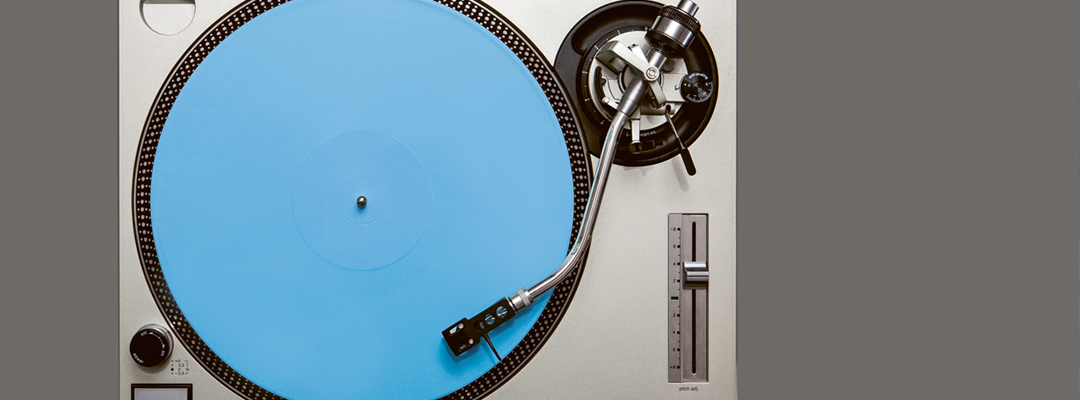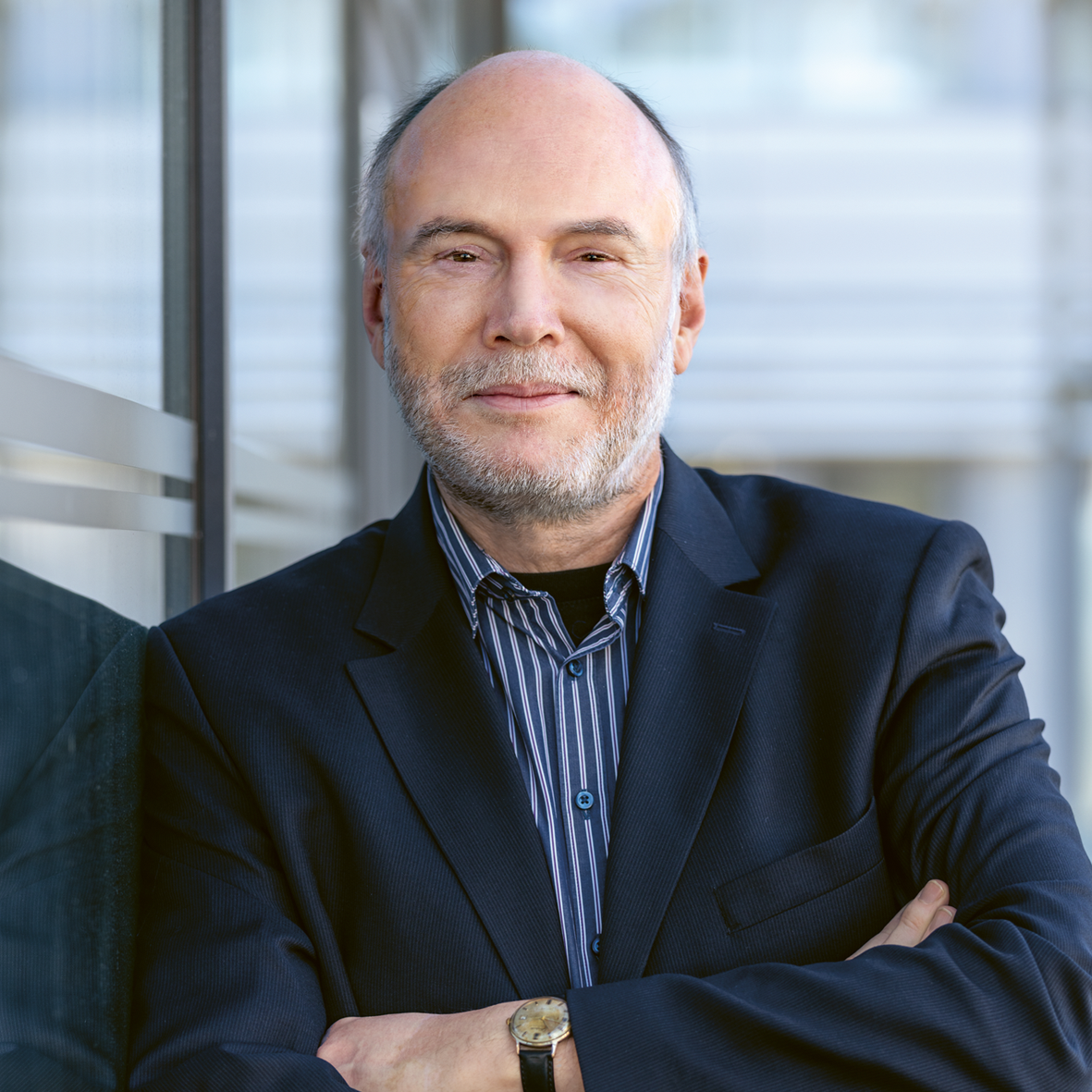
Annual Report 2020
ORIGINAL AND IMITATION?

Are analog and digital opposites? Observations by Frank Blöhbaum and Axel Jahn expose an interesting conflict. Decisions must be made, above all at the interface between analog and digital – the frontend. Conversation between Frank Blöhbaum and Axel Jahn: Reflections on analog and digital.
FRANK BLÖHBAUM I am convinced that our world is analog. Nothing it contains is originally digital. Digital technology is a human invention. We take in information with our senses and process it. The senses are purely analog. Sight, feel, smell, taste – and we still do not have any digital expression for smelling and tasting. We process this as humans, and we respond to nature – with analog reactions. Humans try to represent the constant chaos that appears to prevail in our environment with mathematical formulae, to make it understandable and to tame it. Signals are received in our heads in analog form, filtered (what should be memorized?!), and stored. As engineers, we describe this as signal processing and storage. And achieving this in pure analog form in technical dimensions is complicated, expensive, and poorly reproducible. Some time, we will be able to do this very much cheaper with digital technology.

AXEL JAHN Conceptually and according to our understanding of it, the term analog is somewhat traditional, continuous, and enduring. Indeed, something like how nature appears to have been created. So it also has something very individual about it, this analog technology. The starkly formalized digital technology contrasts with it. There is really only yes or no. The aim of digital technology is to produce uniformity. This is also what we aspire to with our production processes in the company: Uniformity, reproducibility, a standardized and exchangeable device. We are all individuals; each of us has their own specialness. I have a wrinkle on the left of my face;someone else will have one elsewhere. Digital technology wants to iron these differences out, so to speak, using filters and such like. If one looks at nature in more detail one finds that yes, there is indeed a very great transition zone between 0 and I, with corresponding uncertainties. There are conditions here that are no longer unambiguous, like the twilight between day and night. Are we now a bit near to I or very close to I? With this assessment we quickly find ourselves back in the analog world again.
FB Music is a very good example of the difference between analog and digital. Vinyl records are produced using entirely analog methods. In the old days, it was even the case that orchestras had to play into a funnel. They played, and the sound was recorded directly onto a vinyl record – a direct analog representation. Music consists of numerous vibrations. On a CD, these vibrations are always stored at equal distances, but only as numbers.
Take a piece of graph paper and put a cross on it every ten millimeters. Initially, this only results in a sequence of numbers. If you have a vibration and always take just one sample, a point on this vibration, then you cannot know what has happened before or after it. In other words, the more vibration points I take, the more precise my representation of this analog signal. I can make a perfect representation with an infinite number of points. This is exactly what the analog vinyl record does. It has an endless number of points. But, the analog copies of them are individually subject to interference – every record crackles differently. Digital copies, on the other hand, are perfect replications because one only as to copy numbers – a comparatively easy technical process. One does signal processing digitally because it has become so unbelievably cheap – and because I can precisely reproduce the most complicated computing operations with digital representations of the analog world. The processing of digital signals is called computing. And affordable computing capacity is becoming increasingly more powerful, although the space requirement is getting smaller and smaller. So that now even digital representations of complex analog, natural, learning processes are reasonably priced and compact – in our sensors too. This opens up a new world full of possibilities. The number of possibilities we implement in our sensors ultimately simply depends on the price and on whether the customer actually wants to have these possibilities implemented in the sensor. But there is always an analog component right at the start as an interface to the real world, for example a photodiode or a pressure sensor. The beginning is always an analog component that detects analog variables. And the question is how much I have to ‘fatten up’ this little signal in analog form so that I will then be able to digitally process it further very cheaply.
AJ What I find, unfortunately, is that the analog interface is not always understood in depth, or carefully enough processed. One very quickly distances oneself from the original. One can see this with mobile phone cameras, for example. Their pictures are highly computed and one has to ask oneself what has been reinterpreted in the picture and what is actually real. These possibilities simply do not exist in this form with analog photography. My point is that everything that is lost at this interface can never be recovered. I increasingly distance myself from the original. So I would wish that people better perceived the special aspects of the analog/digital interface. If I want to take the digital path I should try to stay as close to the original signal as is sensibly possible. Then I should not compute out any errors that are actually only caused by the way in which I obtained the digitalized signal. There are always intermediate values that I do not know. If the deviation from the original is too great I can always increase the number of measurement values. After a certain point, however, I would then drown in the quantity of data and return to the analog signal. It’s important to find a good balance here. So one really must get a feeling for the analog signal and see what part of this signal is really needed to transfer it to this other world as exactly and true to the original as necessary.

FB If I still want to see – I mean detect – some-thing when I am driving a car wearing a poor pair of glasses, I can try driving the car with greater effort for my head and eyes, in other words put greater stress on the signal processing. If we take this analogy further, the glasses will become so bad that at some point I can no longer recognize road signs – even with the greatest of effort. It’s the same in our sensor world. Working with a lowcost, low(er)-quality, more inaccurate frontend and then trying to correct everything with filters has limits. A good engineer, who knows both worlds, is needed here – and then this optimization task too. That is a real conflict. How much effort do I need to achieve what level of accuracy? How much will that cost me? In an ideal world, what improvements can I subsequently make with cheap digital technology? This must be decided separately for each application and each device. We have experts for this. Experts who know both worlds well.
Axel Jahn: Research & Development, New Technologies & Basic Development
Frank Blöhbaum: Head of New Technologies Research & Development, New Technologies & Basic Development







